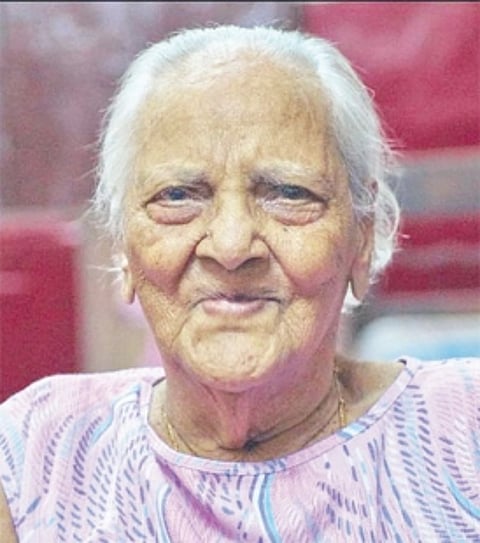

When Lourdes Conceição Lobo died on November 3, it was literally and figuratively the end of an era. Not only was she Goa’s only-known super centenarian (a blessing that’s only accorded to around 1 in 1,000 centenarians), she was also Camurlim’s best-known resident, and possibly the oldest Goan that ever lived — at least among those whose details are documented.
Lourdes, whose favourite saint was incidentally St. Joseph, the patron of a happy death, died just weeks short of becoming a teenager for the second time in her life. It was an incredible life that spanned both world wars, 10 Popes, and 21 US Presidents.
While many others who reach the pinnacle of human years are quick to dispense “secrets”, she never did so, and always credited her long life to the Almighty. “No secret to a long life, just the Will of God,” she would say.
This was no surprise. Whenever visiting journalists asked her for her opinions on various issues, she often resorted to Biblical aphorisms. For instance, when asked what could be done to stem the rot in contemporary society, she instantly quoted Jesus in Matthew 22: “Love God, and love thy neighbour”.
Lourdes was born in 1908, in Socorro village in what was then the Estado da India. In 1944, Mae married José Maria Lobo of Camurlim. Over the years, she had four children — Joanita, Jesseline, Brian, and Gemma, her youngest daughter who was her primary caregiver in her final years. As the decades passed, Mãe became grandmother and great-grandmother, apart from being unofficial matriarch of the parish of St. Rita of Cascia and the village of Camurlim.
Mãe, as she was known to everyone except her actual children (who addressed her as Mummy), quickly became well-known across the state and was a legend to the diaspora worldwide, proud to have a fellow-Goemkar occupy the highest echelons of human longevity.
Extremely active well into her 100s, she often did her own chores, stitched, walked about and visited her family, which was everything to her. It was only much later that she was confined to a wheelchair, but even then, her mind remained sharp, watching the news and being familiar with the same pop culture figures people a fifth of her age talk about.
However, entertainment was for later. She began her day with her “spiritual breakfast” — scanning the obituary page of the Herald, and praying for all those who passed away the previous day.
This strong faith, she bequeathed to her family. The daily Rosary was a non-negotiable part of the day, and anyone who started their meals before saying their Grace would invite a long, hard stare from Mãe, which would hold till the plate was set aside and God’s blessings were first invoked.
Indeed, her strong faith was even evident after her death. In keeping with the spirit of Pope Francis’ 2015 encyclical Laudato Si’, which exhorts Catholics to care for our planet, Mãe was buried without a coffin, wrapped only in a white shroud. This simplicity harks back to Chapter 3 in the book of Genesis, which says, as we're reminded every Ash Wednesday, “for dust thou art, and unto dust thou shall return”.
The main celebrant for Mãe’s funeral Mass, Fr. Roman Rodrigues, commented in his homily that hers was a highly unusual funeral, since nobody was crying. He was right. Mãe herself had banned mourning after her death, and insisted that her life be celebrated instead. Thus, the funeral was just that, since Mãe only went ahead of us to the place we all must go one day. As the inscription above the cemetery gate on Camurlim’s highest hill reminds us: Aiz mhaka, faleam tuka.